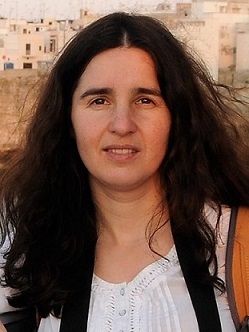Title: honorary visiting fellow
Country/Region: UK
Period: 2017/6/1 - 2017/11/30
Theme: Imaging Nishinoshima magma chamber with electromagnetic method.
Host: Kiyoshi BABA
Introduction: Dr. Anna Avdeeva is a geophysicist with a strong mathematical background and experience of designing and implementing numerical algorithms to solve challenging scientific problems. Her main expertise lies at the interface between mathematical modelling, optimization methods and high performance computation. She studied Mechanics and Applied Mathematics for her MSc (Lomonosov’s Moscow State University) and Geophysics for her PhD (Dublin Institute for Advanced Studies), specializing in three-dimensional magnetotelluric inversion. During her post-doctoral research (Germany and the UK) she has applied her skills in a variety of academic and industry projects to image the Earth’s subsurface from the first 10 metres to upper-mantle structures. Her research has been funded by industry partners such as Wintershall and Shell. In 2012, she co-founded Geophysical Imaging Services LLP – a company providing consultancy services on EM data analysis and inversion. Through this company, she has completed various mining and geothermal projects. Anna has published results in internationally recognized journals, and presented her work at numerous international conferences. She is an Associate Editor for “Geophysical Prospecting”.
During her stay at ERI, Anna plans to contribute to the electromagnetic (EM) imaging of the newly developed volcanic island Nishinoshima. Imaging of Nishinoshima's magma chamber will help to understand the processes that are involved in the development of new continental crust. Nishinoshima is located in an area with complex sea-floor bathymetry which has to be properly incorporated into resistivity models to obtain accurate EM responses, as otherwise the responses on the slopes of the bathymetry can differ by orders of magnitude. Anna proposes to develop a more efficient, flexible and robust EM modelling code compared to available approaches. The modelling strategy will be based on finite-element methods with adaptive unstructured meshes.
View All
Fiscal Year: 2017
Fiscal Year: 2017


